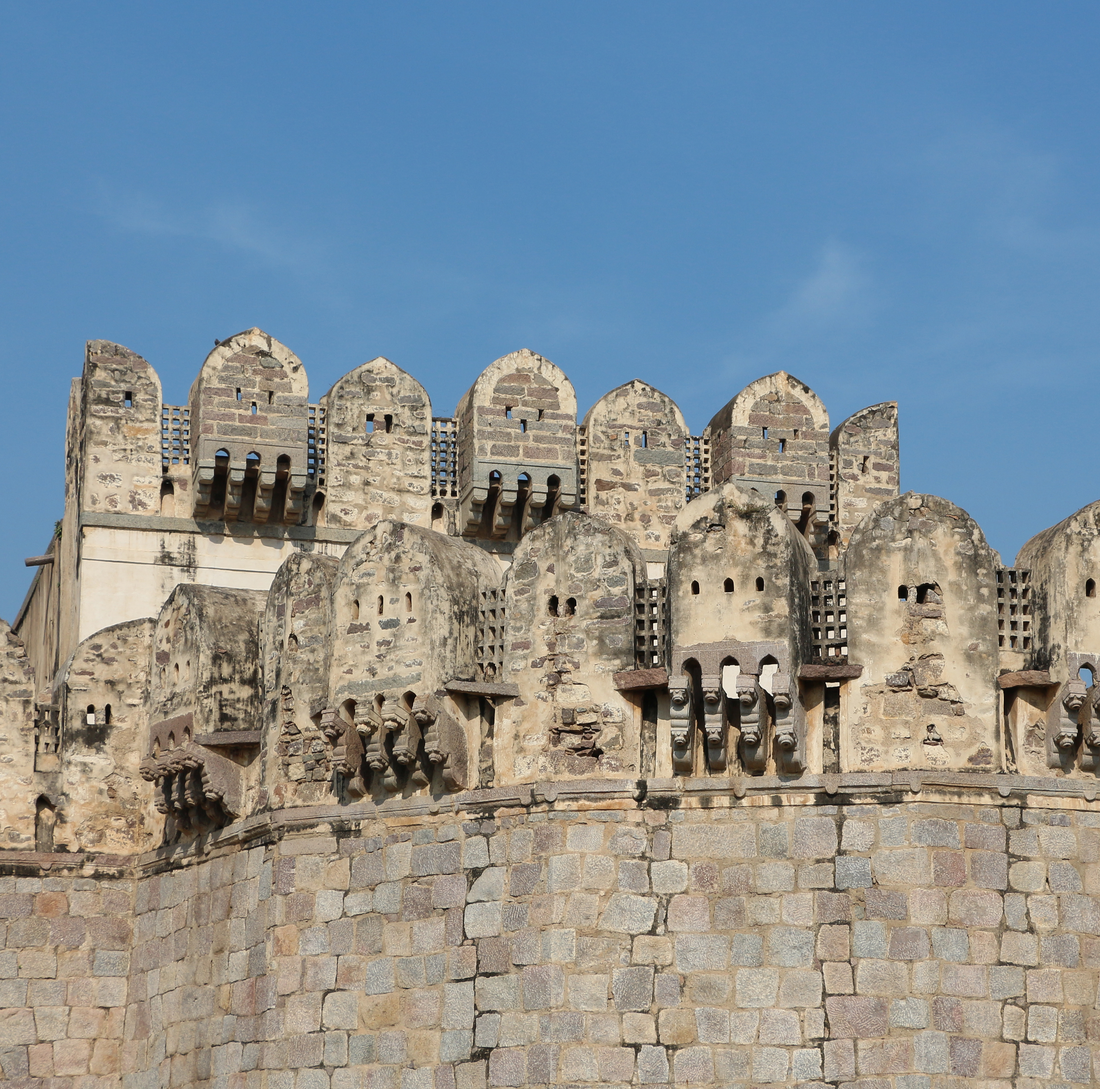Shimmering with light, the legendary diamonds from the historic Golconda Mines in Southern India, are known to be exceptional and at one time they were pretty much the sole source of diamonds in the world. Today the Golconda Mines are no longer producing diamonds, but the mystique of these exceptional gems continues.

Built in the 12th century, the Golconda Fort was like a small town. It hosted the royal palace, homes of nobility and the military, as well as a marketplace where dealers traded diamonds. The actual mines, although part of Golconda, were located a short distance from the Fort. India was a known source for diamonds as far back as the Fourth Century BCE, but the Golconda region was particularly active. The country was the main source of diamonds in the world until the icy gems were discovered in Brazil in the 1720s and in South Africa in the 1860s. By the 1700s the Golconda mines were running low, by the 1800s the mines were pretty much tapped out and by the early 1900s the mines no longer produced stones.
The Spiritual Connection

In India, diamonds played a very important role in the spiritual pursuits of the royals. The sparkling gems were so revered that only kings and brahmins (priests) were allowed to wear them. Natural diamonds were considered very auspicious, but only when they had certain traits. The diamond had to be set in its natural shape, with the octahedral form considered the most desirable. It also had to be free from inclusions and very white so that when the stone sparkled, it created a rainbow activating the protective talismanic forces of the gem. The royals and priests believed that the optical effects created by the diamond brought power from the Gods to the one wearing it.
One of the traits that set the diamonds from Golconda apart from others is that they tend to be large and often very clear, although some of the most renowned gems from those mines are colored diamonds. A few examples of historic Golconda diamonds are The Koh-I-Noor, which is part of the British Crown jewels and can be seen at The Tower of London, The Hope Diamond, which is on display at the Smithsonian in Washington, D.C. and the Dresden Green, which can be found at the Green Vaults in Dresden, Germany. The Regent, the Great Mogul, The Wittlesbach-Graff and the Idol’s Eye are also considered to be from Golconda.
Chemically Pure

Aside from their alleged mystical powers, Golconda diamonds have gemological characteristics that make them extraordinary. Golconda diamonds have the distinction of being Type IIa, which means that they are nitrogen free. Most diamonds have trace elements of nitrogen as part of their chemical composition. The presence of nitrogen changes the flow of light in the stone and if there is a lot of nitrogen in the gem, it will turn yellow. A lack of nitrogen is what makes Golconda diamonds especially transparent due to better light transmission, they also appear brighter and whiter than other diamonds because of their chemical purity. The transparency of these special gems gives them a “watery” appearance that has a dreamy quality to it that is unique to Golconda diamonds.
Type IIa diamonds have been discovered in other mines, but not on regular basis like they were in the Golconda mines. Today, only about 2 percent of all mined diamonds are Type IIa. These diamonds are sometimes called Golconda diamonds, but it is more of a modern marketing strategy than a true designator of country of origin. If someone says that a diamond is “Golconda like” that is probably a good indication that the stone is Type IIa, but not actually from Golconda. Additionally, Golconda diamonds are generally found in antique or vintage jewelry, unless they have been taken out of an older piece and mounted in a contemporary setting.
Due to their exceptional rarity and beauty, Golconda diamonds are highly desired and hard to find, capturing the imagination with their legendary beauty.
Top of Page: Machicolation of the Golconda Fort, India, image courtesy Bernard Gagnon / Wikimedia Commons.
Golconda diamond, 4.17-carats, D, Internally Flawless, vintage oval shape, accompanied by a GIA report and letter stating the diamond is Type IIa, courtesy Ernst Faerber; Regent Diamond at the Louvre Museum, Paris, courtesy Mickaël Schauli / Wikimedia Commons; Dresden Green Diamond, photo by Eduard Gübelin / Wikimedia.
Authored by Amber Michelle

